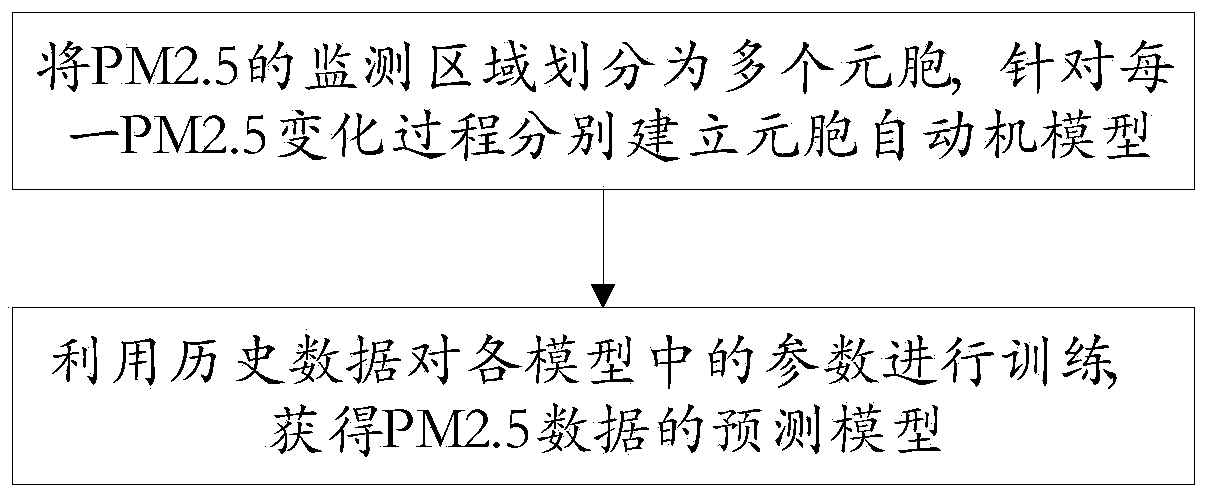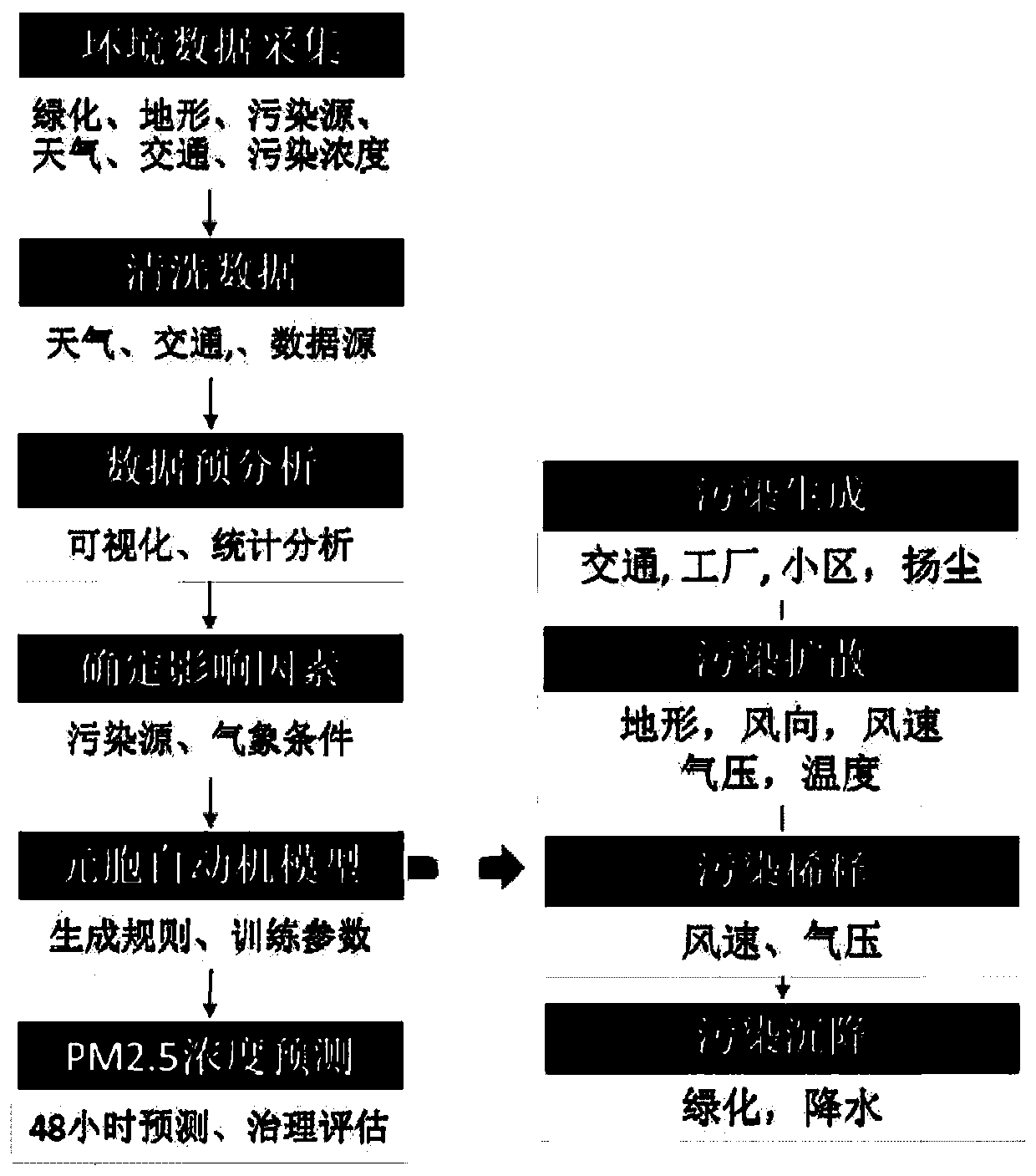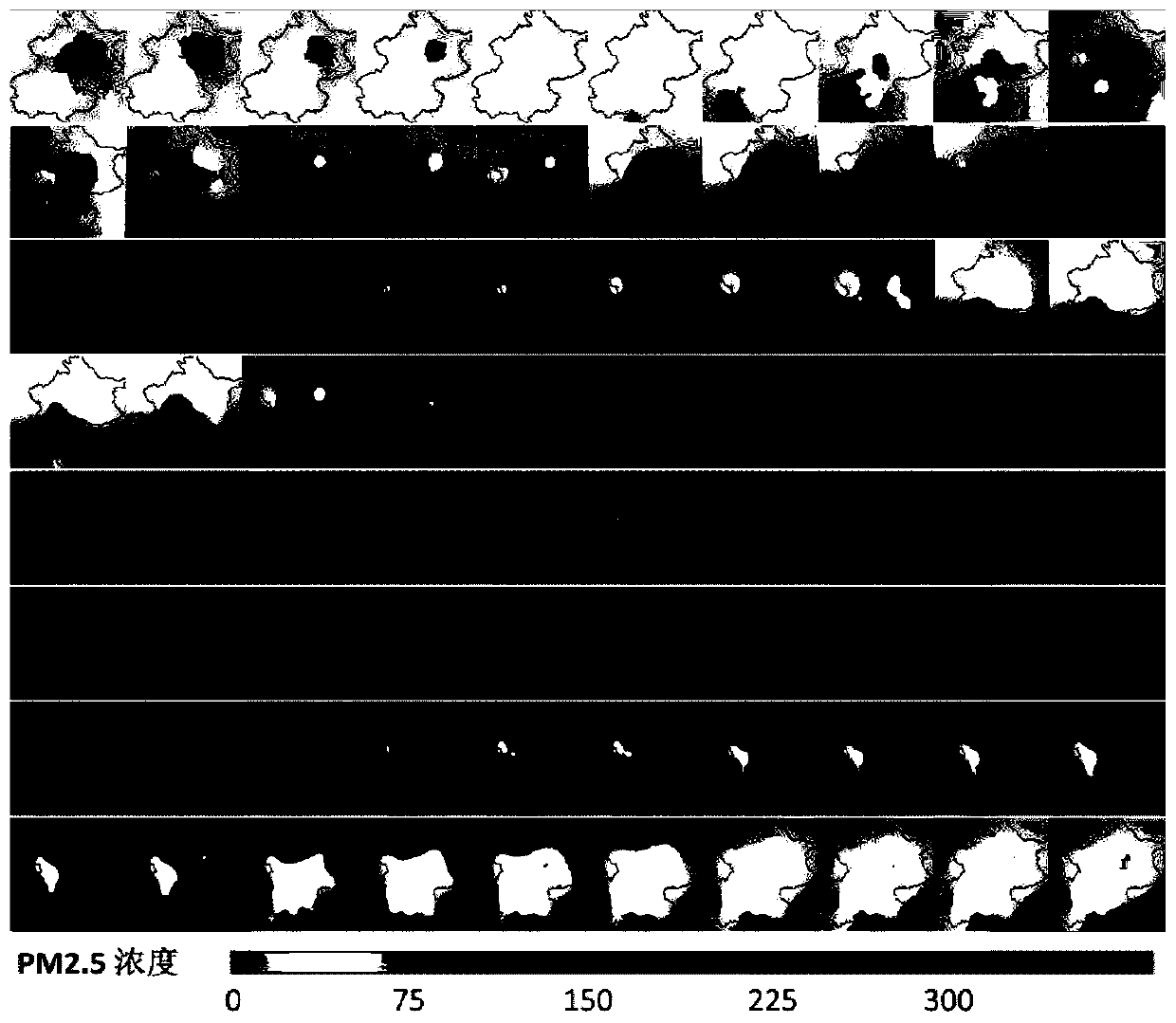A method for data analysis and prediction model establishment of pm2.5 concentration
A PM2.5 and forecasting model technology, applied in forecasting, data processing applications, instruments, etc., can solve problems such as narrowing the selection range, huge rule space, and long training time, achieving strong parallelism, good generalization ability, and structural simple effect
- Summary
- Abstract
- Description
- Claims
- Application Information
AI Technical Summary
Problems solved by technology
Method used
Image
Examples
Embodiment 1
[0049] A method for data analysis and prediction model building of PM2.5 concentration of the present invention, the specific steps are as follows:
[0050] A method for data analysis and prediction model building of PM2.5 concentration, comprising the steps of:
[0051] Step 1. Decompose the change process of PM2.5 into pollution generation, diffusion, dilution and sedimentation; divide the monitoring area of PM2.5 into multiple cells, and establish a cellular automata model for each process;
[0052] Step 2, using historical data to train the parameters in each model to obtain a prediction model for PM2.5 data.
[0053]The present invention uses a cellular automata model to simulate and predict PM2.5 concentration changes. On the one hand, the model has a strong evolution ability, which can simulate a variety of complex phenomena and adapt to changes in complex systems. On the other hand, the model has strong parallelism and is easy to implement parallel computing. In s...
Embodiment 2
[0055] A method for data analysis and prediction model establishment of PM2.5 concentration. Aiming at the problem that the change of PM2.5 concentration is difficult to simulate and predict, the change process of PM2.5 is evolved through the cellular automata model, and the data analysis method is used to narrow down the PM2.5 concentration. The PM2.5 rule selection space speeds up the modeling process of the cellular automaton and realizes the purpose of predicting the PM2.5 concentration, such as figure 2 As shown, the specific process is:
[0056] Step 1, data cleaning.
[0057] Use a polynomial model to learn historical data (related to weather), obtain the number n of items of the best fitting curve, and establish a polynomial of degree n. When evaluating the historical data monitored at the i-th moment, the n-degree polynomial is trained on the data of n moments with a short interval from the i-th moment and with high quality. The data at the i-th moment of the curve ...
PUM
 Login to View More
Login to View More Abstract
Description
Claims
Application Information
 Login to View More
Login to View More - Generate Ideas
- Intellectual Property
- Life Sciences
- Materials
- Tech Scout
- Unparalleled Data Quality
- Higher Quality Content
- 60% Fewer Hallucinations
Browse by: Latest US Patents, China's latest patents, Technical Efficacy Thesaurus, Application Domain, Technology Topic, Popular Technical Reports.
© 2025 PatSnap. All rights reserved.Legal|Privacy policy|Modern Slavery Act Transparency Statement|Sitemap|About US| Contact US: help@patsnap.com



